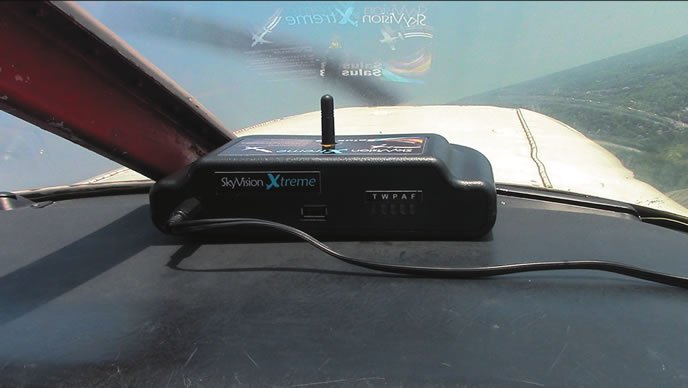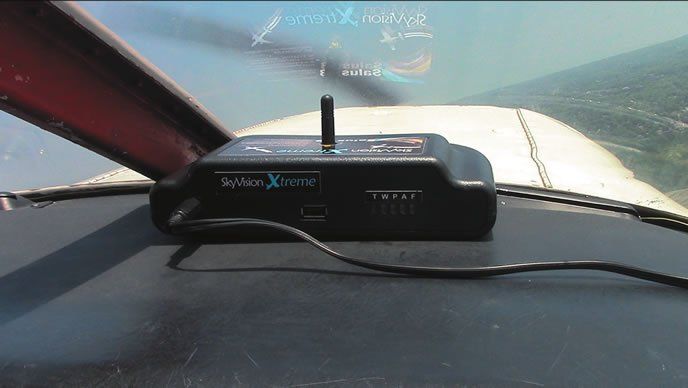IS THE SALUS-3 APPROVED?
Overall, editor Larry Anglisano did a great job of explaining the Skyvision Salus-3 portable ADS-B Out/In solution and the Xtreme Vision software (June 2015 Aviation Consumer.) We were impressed with the article’s accuracy and his ability to review it without personal bias. However, there are a few finer points related to certification.

ADS-B Out equipment does not need to be TSO’d due to the FAA’s recent rule change (technical amendment 91.336), which recently corrected the original 91.225 final ADS-B rule. As amended, the ADS-B Out rule states that to comply with the 2020 ADS-B mandate, the ADS-B Out equipment only has to meet the performance requirements of TSO-C154c and FAR 91.227 for flights below 18,000 feet.
The amended FAR 91.225 states in part that the installed equipment must meet the performance requirements, but it does not say “permanently installed,” therefore we contend that a portable that is installed on the glareshield should meet that part of the requirement.
Further, even though the 91.225 final rule does not state permanent antennas are required for ADS-B Out (including 978 MHz solutions), Skyvision will provide an option for connecting the device to remotely mounted or permanently installed GPS and UAT antennas. With these antennas, the Salus-3 could be remotely located or installed.
The Salus-3 device meets the performance requirements of TSO-C154c and 91.227, per the amended rule. Hence, in our opinion the Salus-3 meets the 2020 mandate for all aircraft flying below 18,000 feet.
The arguments against allowing a portable device to be used to comply with the 2020 mandate were based on fears related to performance (in part) and other factors like permanent antennas, pressure altitude input, having more than one source for squawk code, control panels and automated integrity checking. We feel we have addressed all those issues with the Salus-3 and TransMonSPE transponder module. Some of these arguments were made when there were very few ADS-B ground stations activated and less refined UAT equipment.
Our testing and your inflight evaluation indicated that the Salus-3 performed well, even without external antennas.
To our knowledge, we offer the only portable ADS-B Out product that meets the performance requirements of TSO-C154c as specified in FAR 91.225 and 91.227 as amended by 14CFR 91.336.
Harry Sanders
Skyvision Xtreme
We ran all of that by Bruce DeCleene, manager of the FAA’s Flight Technologies and Procedures division. He told us the ADS-B ruling specifically states that the equipment must be installed, and that portable equipment cannot be used to satisfy the mandate, even in experimental aircraft.
Ric Peri, the Aircraft Electronics Association vice president of government and industry affairs, concurs that Skyvision can make the argument that its portable Salus-3 meets the intent of the ADS-B mandate, assuming it meets the required performance requirements. He also said attaching it to the glareshield or windscreen isn’t considered “installed” by the FAA’s definition.
That means AC 20-165A applies, providing guidance for the installation of ADS-B Out equipment. It requires airworthiness approval through type certification or the supplemental type certification (STC) process for an ADS-B Out system meeting the equipment requirements of 14 CFR 91.227.
Still, we think connecting the Salus-3 to external L-band and GPS antennas could be a fair compromise, giving it a semi-permanent status. If Skyvision could score a baseline STC—meeting the requirement for ADS-B equipment in certified aircraft—it could open the doors for follow-on field approvals and simplified ADS-B compliance.
HOW WE EVALUATE STUFF
In the June 2015 issue of Aviation Consumer, reader Peter VerLee wrote in regarding his subjective assessment of various landing lights, and you took him to task, stating, “The data is the data” and therefore you “stand by the conclusions,” regardless of his subjective experience.
Yet, in your December 2012 article “ANR on a Budget,” you describe your headset testing methods as follows: “We skipped geeky lab analysis and complicated audio engineering data. Instead, we assembled a diverse test group of a half-dozen active pilots and handed these things out like candy on Halloween.”
I think you are right to stick with objective data in your testing of landing lights. But, you can’t and shouldn’t have this both ways.
Because headsets are worn, I don’t mind you including subjective data on headset comfort. But I don’t understand why you do not also test headsets for objectively and quantifiable measured noise reduction performance and provide the results.
Geof Swain
Milwaukee, Wisconsin
Our approach to evaluating products needs to remain subjective and objective. We learned a long time ago that just because a product excels in lab testing doesn’t mean it’s a favorite and an overall top value in the real world.
We do make use of controlled laboratory and bench/shop testing when appropriate, as we did in the HID/LED comparison article and many others.
When it comes to a product as personal as a headset, we think judging its control set, comfort, appearance, the way it fits with and without eyeglasses and ballcaps, in addition to evaluating its ANR performance in a variety of aircraft is far more telling than relying on lab testing alone.
That’s why we assemble a diverse group of pilots and passengers to use them, we compile the data and rate them based on a variety of traits, including manufacturer-provided ANR circuitry specs, our own bench evaluation results and the results of their performance in the aircraft.


